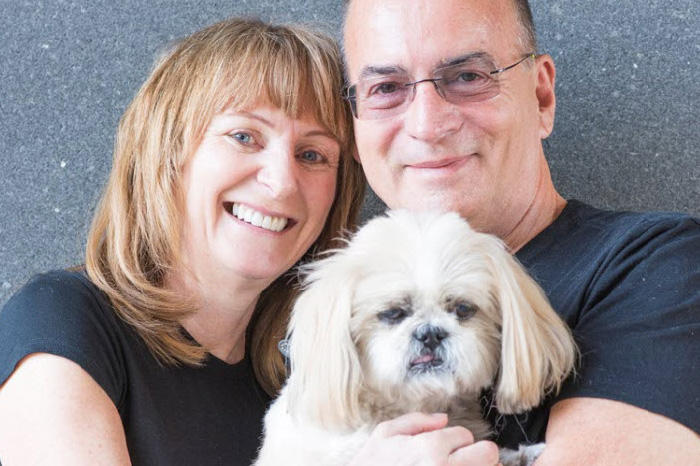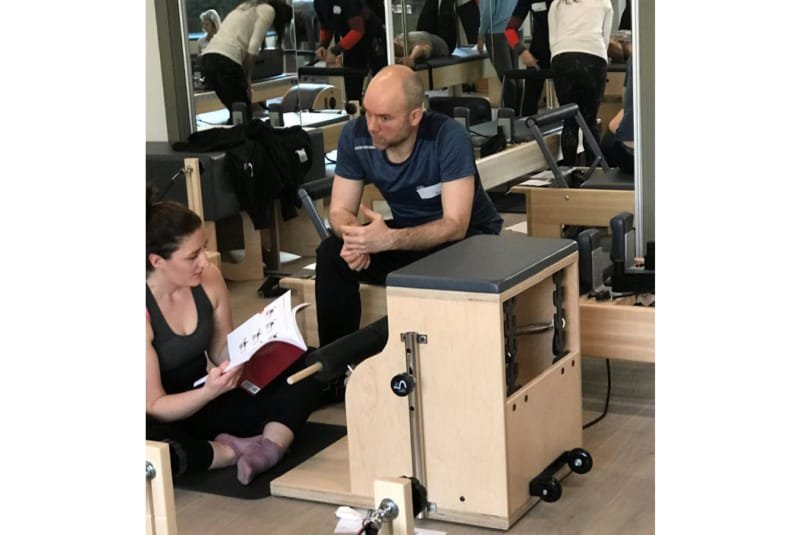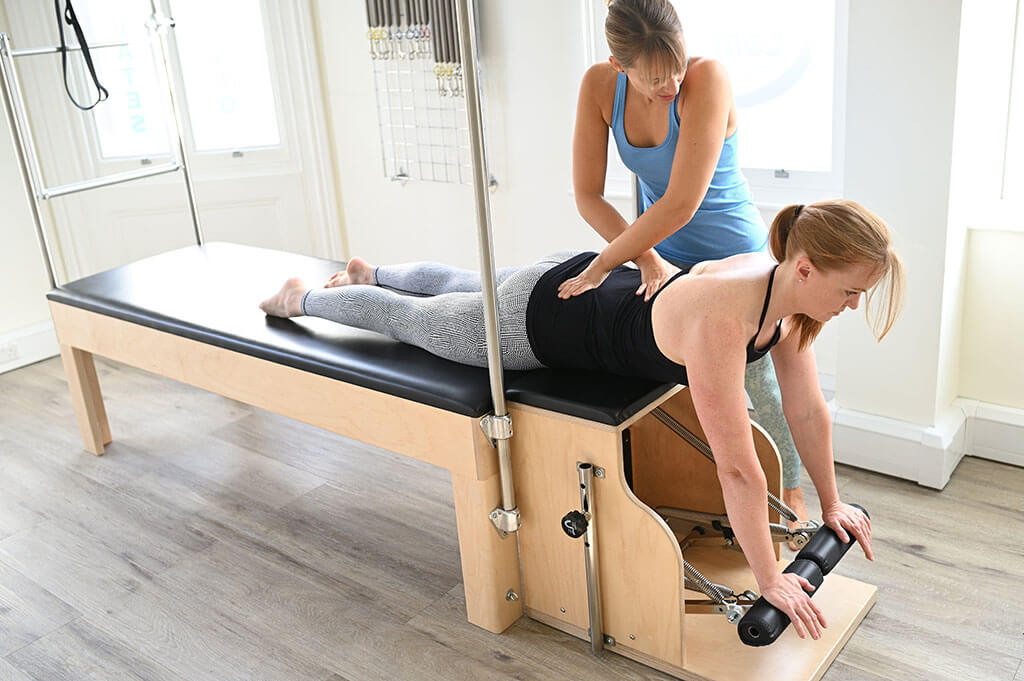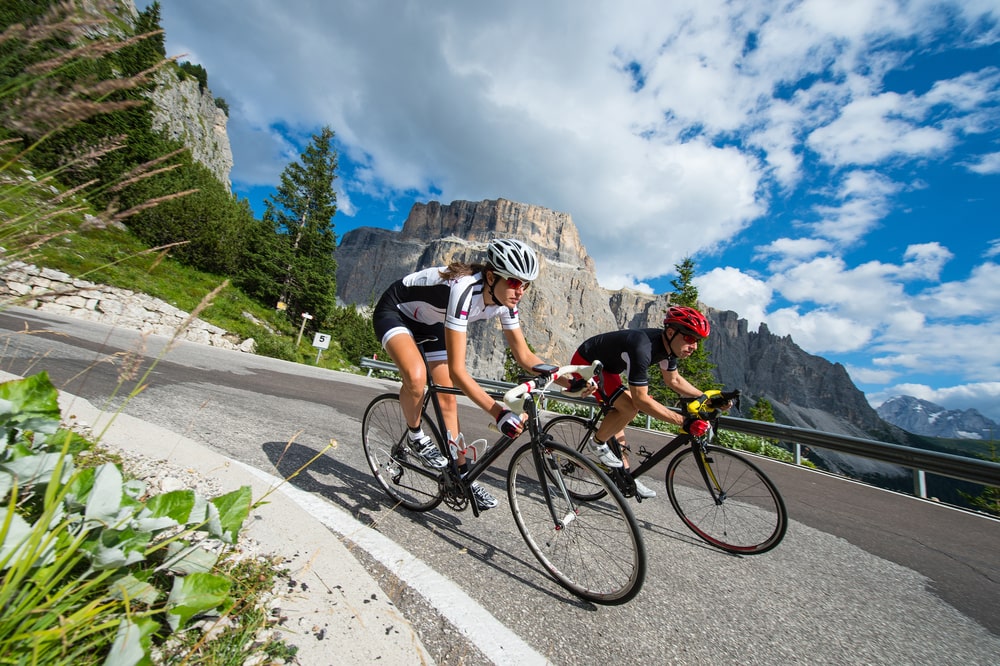When it comes to becoming a Pilates instructor, choosing the best teacher training course for you is important. However, finding one that fits your needs can be difficult given there are so many on the market.
With regards to clinical Pilates, the Polestar courses are known to be some of the best and most comprehensive ones around. Polestar’s unique approach also helps it to stand out – its method combines Physiotherapy and mind-body energy systems with Pilates.
We wanted to find out more about Polestar, so we sat down to chat with Julia Moss, an instructor and the Polestar franchise holder in the UK (along with her husband, Carl). Here she shares her personal Pilates journey, explains the reasons why Pilates teachers should train with Polestar and gives advice to new students.
Q. When did you first discover Pilates?
A. I’ve been doing Pilates for about 20 years now. I first got into it because of my running. I’ve run every day for the last 35 years but, when I got into my 30s, I started getting injured. I kept getting hip injuries and was seeing a lot of osteopaths [for treatment] but nothing was really helping.
At the time, I was an aerobics teacher, so I was teaching a lot of step aerobics – that type of thing. Then I discovered Pilates for myself with Michael King (founder and former Director of the Pilates Institute UK), who was teaching in a little corner of a room in a yoga studio at the Barbican in London. I used to go and do a class with him once a week on reformer. This was right at the very beginning when there weren’t really reformer classes or group Pilates classes.
Q. When did you train as a Pilates instructor?
A.I originally did a course with Michael King. Then, when Polestar launched in the U.K., I re-trained with them in 2001. We took the Polestar franchise on in 2008/2009, so it’s coming up for about ten years now.
Q. There are a lot of Pilates training courses out there, what makes Polestar different?
A. I think for me – and this is something that I’ve always loved about Polestar – is that it is about looking at a person in a holistic sense, rather than just saying, “this is the Pilates exercise, this is how you do it.
Polestar teachers get their students to see the person [they are teaching] in front of them and learn to look at them from a problem-solving perspective. This is instead of just teaching people Pilates exercises from the repertoire.
The way the course itself develops from module to module is also very well thought out. Each module develops on from the last one, and each has a particular theme to it.

Q. Unlike other courses, you choose not to split students up according to their medical/non-medical backgrounds (Physios mix with career changers with no medical background, for example). What are the benefits of having these students mix together?
A. I think it’s great because the students can really learn from each other, as well as learning from the tutors. That’s what we really try to foster at Polestar: a sense of community. We want our groups of students to really work together.
Having students from all walks of life mix and letting them learn from each other is very helpful. Mixing up someone who is an osteopath with someone who is a dancer with someone who has trained for 20 years as a lawyer is great as everyone has something different to bring to this.
Also, at the end of the day, we’re teaching movement, we’re not teaching people clinical anatomy. We’re teaching good movement, and whether you’re an osteopath, or a dancer, or a lawyer, the same rules apply.
[Although it is a clinical Pilates course], the course itself is not just taught from a clinical point of view. You’ve got osteopaths being taught by people who are non-osteopaths, which I think is actually incredibly helpful.
Our team have a wealth of knowledge in other disciplines other than Pilates. They bring all of that into the training, along with their own personal development of themselves – one of our educators is a craniosacral therapist. It all adds to the flavour of the training.
Q. How do you see Polestar developing over the next few years?
A. People are really starting to talk about Polestar, which is great. Most people are hearing about it through word of mouth. [Now we get people phoning] enquiring about the training because they’ve talked to somebody who is a student with Polestar and has said good things about the course.
We’re looking at expanding the number of courses we’re running each year so that Polestar becomes more of a household name in the UK, like it is in places like Australia and the US. [In those places] it’s very well known, but still isn’t so much in the UK. We’re working hard to change that and I think the message is starting to get across. People are starting to know more about us.

Q. What’s your advice for new students wanting to get the most out of their Polestar course?
A. One of the things I’d say that’s really important is that, as soon as you start, immerse yourself in it.
So, where it goes wrong is where somebody finishes a weekend module and is exhausted after it. They’ll put their books away [and stop thinking about it]. They’ll have the intentions of doing lots of practise but it doesn’t happen – then they will come back a month later and it’s like, “oh, where was I?”.
Be disciplined about practising – start off the way you mean to go on. [The course] is a journey and each module starts to build on what you’ve already learnt.
But you don’t need to be doing [Pilates homework] all the time. Most of our students have got full-time jobs to fit around the course. If you can do three or four hours a week and a mixture of practising on the equipment what you’ve learned so that you’re ready and you’ve got it into your own body before you come to the next module, that’s really helpful. Then there is usually an assignment [between modules] which relates to what’s coming up in the next module. They’re designed to help you be prepared for what’s coming up.
The other thing is, we’ve got a great education team – use them!
Practising on your own is also important. At the same time, you do need a [member of the teaching team] really looking at you [as you move] on a one-to-one basis at least once a month to give you guidance. They can tell you where you are in your body and the things to work on. I’d say do that, and really work with your fellow students as well. Use the community that we’ve got.
Q. Do you think anyone can do the Polestar course?
A. I would say pretty much anyone, yes.
We’ve had people who retired at 65 and have thought to themselves: what am I going to do next? Okay, maybe I can re-train as a Pilates teacher. They’ve gone on and qualified and set themselves up in a retirement career teaching a few hours a week and thoroughly enjoy doing it.
So yes [anyone can], including people with injuries.
I mean, a lot of people say to me, “well, I need to get fit before I come and to the course” and I say, “no, not necessarily”. You’re going to learn a lot about your body as you start going through the course – and that’s okay. It’s going to be helpful, because you’re going to be working with people who have come from all different background and have injuries themselves. You might be teaching dancers who are able to do everything and then you might also have to teach someone who sits at a desk all day and isn’t fit.
Q. So, people with injuries can do the Polestar course?
Yes. Because, as I’ve just mentioned, working [through your injury yourself] and finding where you need to get to [physically] is then going to help you with your own clients later on.
This is the whole point: this course is for everybody. We try to be inclusive here. If somebody can’t do an exercise then we find a way of allowing them to do that move the best way that they can. This is what Polestar is all about: it’s not about making people a fabulous shape – this type of Pilates is functional.
This is very much our approach to Pilates and is another thing that makes the Polestar course different. If Joseph [Pilates] was here today, he probably wouldn’t be teaching in the same way he was teaching 80 years ago. Things have evolved. Now what we want to do is use Pilates as a movement technique to allow people to move in the best way they possibly can.
Find out more about Polestar Pilates courses by getting in touch
Education is key:
These blogs are designed to give information to everyone, however, it is important to remember that everyone is different! If you have not seen one of our therapists and have any questions about injuries, what you have read or whether this may be useful to you, please just ask. We are more than happy to help anyone and point you in the right direction. Our biggest belief is that education is key. The more you understand about your injury, illness and movement, the more you are likely to improve.







